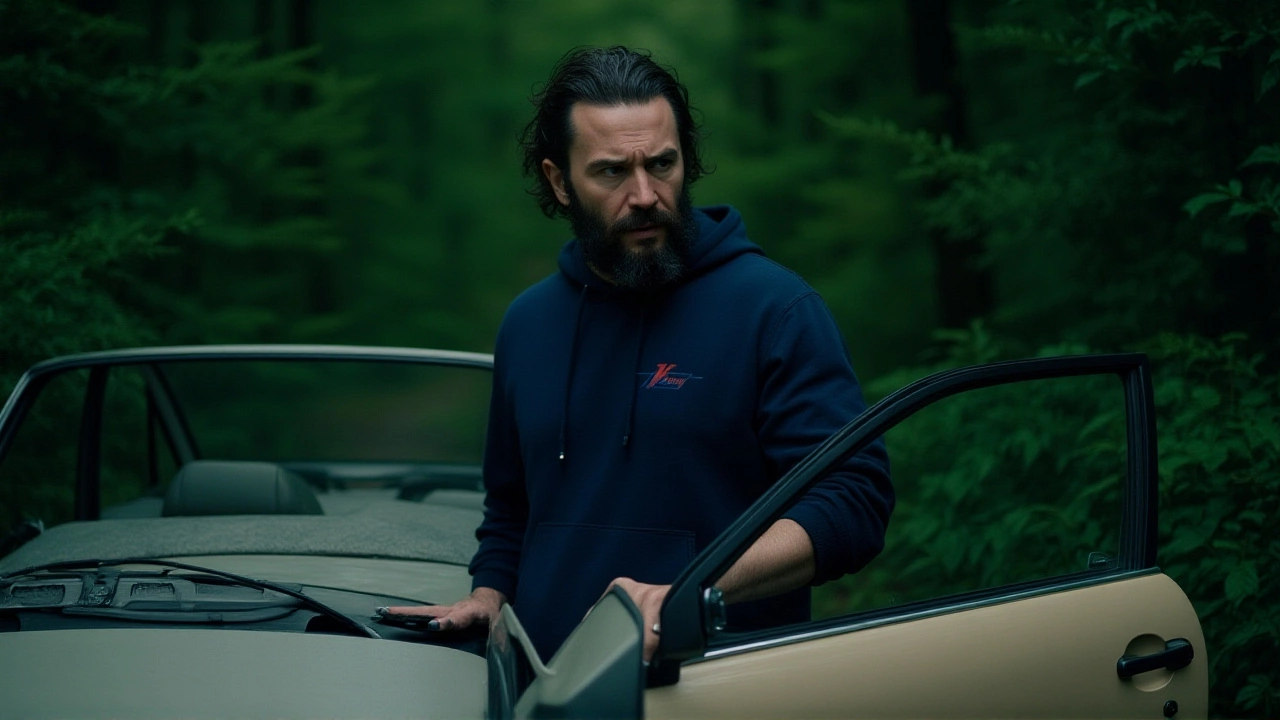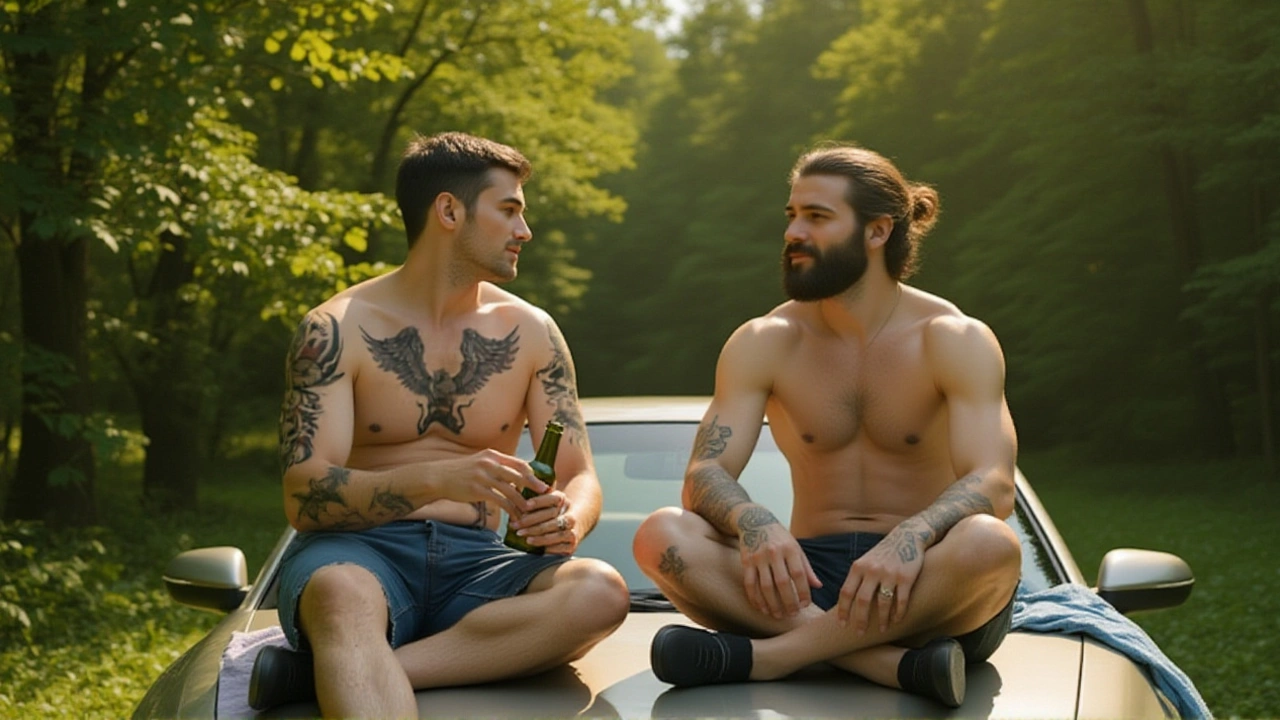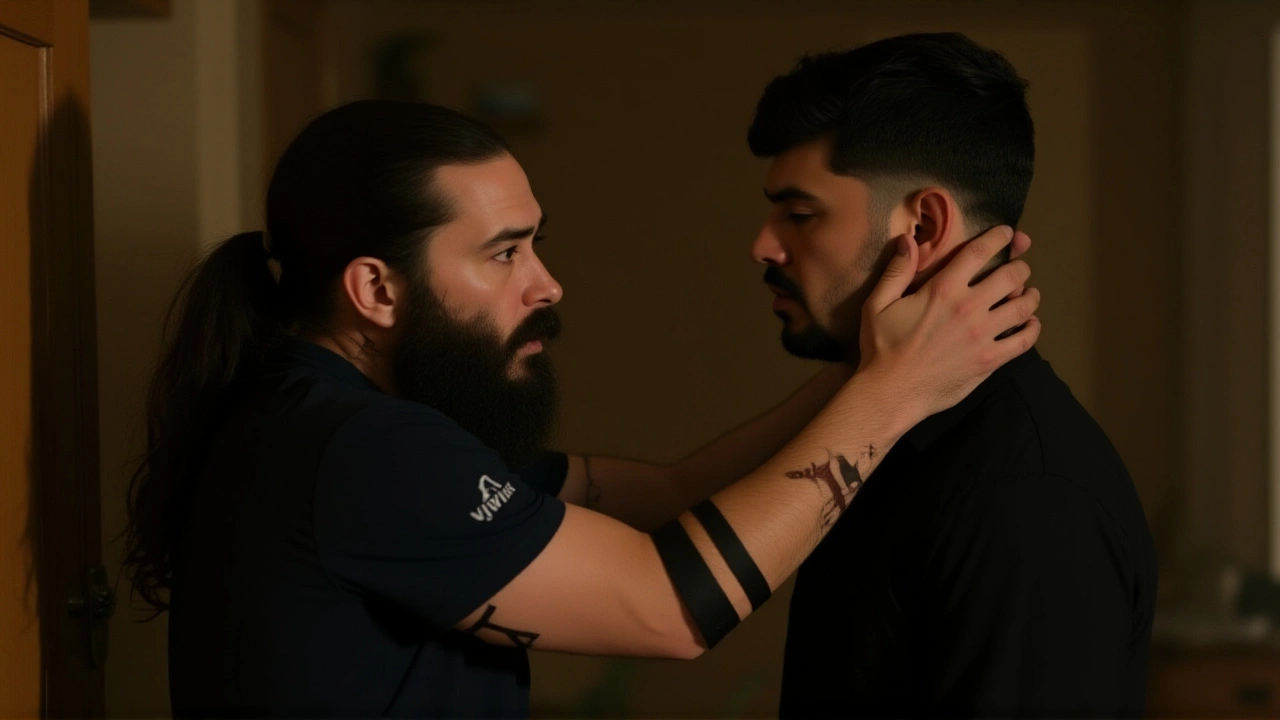When Raúl Castillo slammed his face into a roll of cellophane on HBO’s crime drama Task Episode 4, the world’s biggest streaming platform barely flinched. The scene—Cliff’s death by plastic‑wrap suffocation at the hands of the Dark Hearts gang leader Jayson—unfolded in a gritty Los Angeles warehouse, turning a tense midway point into a visceral nightmare. Not only did the sequence up the ante for the series, it also gave fans a glimpse of how far an actor will go for realism.
Background: How the Dark Hearts Entrapped Cliff
Task follows an undercover task force that infiltrates the Dark Hearts, a notorious motorcycle gang operating out of Los Angeles. In the fourth episode, the gang’s lieutenant Kathleen hijacks a routine drug drop, swapping the meeting spot and feeding the gang leader Jayson a stolen phone belonging to Ray. The trap leaves Cliff, a low‑level operative, alone and vulnerable in an abandoned lot, far from the park he’d been texted to.
Once captured, Cliff endures a beating that leaves his face resembling “a crushed tomato,” with swollen cheeks, a clenched eyelid, and a nose riddled with fractures. The prosthetic work rivals the infamous cracked‑skull scene from "The Walking Dead," a point many fans have already noted on social media.
Inside the Stunt: Castillo’s Commitment to Authenticity
Series creator Sam Levinson and director Sally Richardson wanted the death to feel “unavoidable.” Early test runs featured a spit‑machine that kept sputtering, and a visible breathing tube that threatened to break the illusion. In a candid interview, Castillo revealed the crew eventually let him handle the blood‑spit himself, stuffing fake blood in his mouth and spitting it on cue.
But the real kicker came when the team asked whether he would actually be wrapped in plastic. "I’m a strong swimmer and can hold my breath for a minute and a half," Castillo said. "If I felt any danger, I could rip the wrap apart with my hands. It felt like a trust exercise between me and the crew." The actor lay on a padded mat, hands free, while crew members counted down. He inhaled, the wrap sealed around his head, and the cameras captured every strained inhale until the director called cut.
The set’s atmosphere turned "haunting," Castillo recalls, "like being at your own funeral." Even the makeup artists hesitated to look at the prosthetic‑laden face for too long. The result is a sequence that feels as if the viewer is watching a real death unfold, not a dramatized moment.

Why the Scene Matters for the Narrative
Cliff’s refusal to name his friend Robbie—who runs the covert operation—adds a layer of tragic heroism. Jayson’s rage, spurred by the blood‑spit, converts his vengeance into a methodical, almost ritualistic killing. The suffocation, a seemingly mundane household item turned weapon, underscores the gang’s brutal creativity.
From a storytelling perspective, the episode does three things simultaneously:
- Escalates the threat level of the Dark Hearts, making them feel truly omnipotent.
- Shows the task force’s naiveté; Robbie and his crew are now clearly outgunned.
- Sets up a race against time—only three episodes remain, and both the gang and the FBI are tightening the noose.
The investigation threads start converging. Agent Perry discovers that Cliff’s gun matches one owned by Billy Prendergrast, a peripheral figure whose daughter Maeve appears in old photos that could become crucial evidence. Meanwhile, Agent Tom receives a grainy cellphone photo of Sam Nance at a truck depot—another lead tying the gang’s logistics to the broader case.
Production Challenges and the Rise of Practical Effects
HBO’s decision to prioritize practical effects over CGI aligns with a broader industry shift. Audiences now demand visceral realism, and shows like "Euphoria" (also by Levinson) have proven that raw, on‑set stunts generate water‑cooler talk. The plastic‑wrap stunt, however, required rigorous safety protocols: a medical team on standby, a breathable air pocket in the wrap’s edge, and a timer rig that would automatically cut the wrap if Castillo’s vitals dropped.
Even with all safeguards, the scene sparked a debate among crew members. One assistant director whispered, "If he blacked out, we’d lose the whole episode." The crew’s willingness to trust Castillo’s swimming background mirrors the lengths filmmakers have taken for scenes like Christopher Nolan’s car crash in "Tenet"—all physical, all dangerous, all unforgettable.

What’s Next for Task?
With Cliff’s death sealing the dark tone of the series, the final three episodes will likely focus on two converging fronts: the Dark Hearts tightening their grip on Robbie’s network, and the federal task force closing in on the gang’s supply chain. The narrative momentum suggests a showdown at the same warehouse, perhaps with another high‑stakes death that mirrors the plastic‑wrap tragedy.
Fans are already speculating whether Robbie will attempt a rescue, or if the series will pivot to a courtroom‑style climax where the evidence Perry uncovered becomes the deciding factor. One thing’s certain: HBO has committed to a gritty, no‑holds‑back ending, and viewers will be glued to every breath‑holding moment—literally.
Frequently Asked Questions
How did Raúl Castillo manage the real plastic‑wrap suffocation stunt?
Castillo, an experienced swimmer, voluntarily held his breath while a crew member wrapped his head in cellophane. Safety divers and a medical team monitored his vitals, and he kept his hands free to tear the wrap if needed. The take used no CGI; the actor’s own breath created the choking effect.
Why did the producers choose practical effects over digital ones for the scene?
Levinson and Richardson felt that tangible stunts deliver more visceral impact. In test runs, digital overlays felt "plastic" and failed to convey the claustrophobic dread that a real wrap does, so they opted for an on‑set stunt that audiences could feel.
What implications does Cliff’s death have for the series' storyline?
Cliff’s death raises the stakes dramatically: the Dark Hearts prove they’ll kill without warning, while the FBI gains new leads—Perry’s gun match and Tom’s photo—pushing the investigation toward a climactic confrontation in the remaining episodes.
Who are the key creative forces behind Task?
The series is created by Sam Levinson, known for "Euphoria," and directed by Sally Richardson. Their partnership focuses on gritty realism and character‑driven drama.
When can viewers expect the final episodes of Task?
Task’s season wraps up in three weeks, with new episodes dropping every Friday on HBO. The finale is slated for early October, rounding out the miniseries before the holidays.
